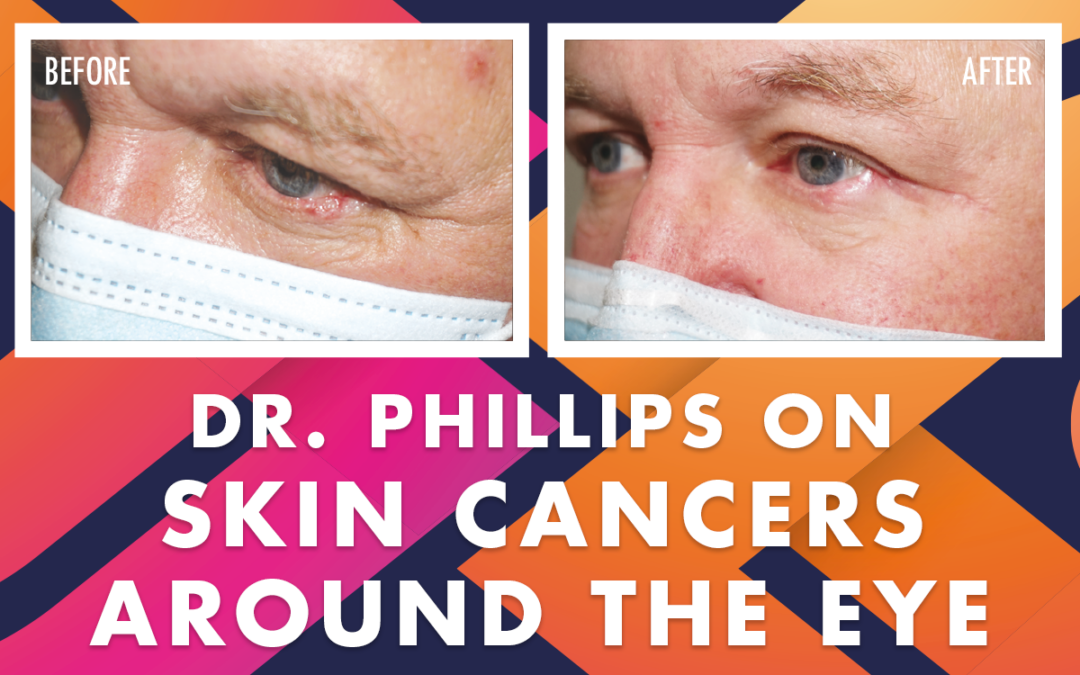Mr. W knew something wasn’t right when the bump on his eyelid wasn’t responding appropriately to the ointment his doctor prescribed for a stye. He sought a second opinion. His doctor performed a biopsy in the clinic, which confirmed his diagnosis of basal cell carcinoma. His doctor removed his cancer in its entirety, and his eyelid was reconstructed (see pictures). Beyond the missing lashes in the area of his cancer, he has healed well with minor signs of any previous surgery. Unfortunately, Mr. W’s story is all too common. Fortunately, we can change that!
The eyelids are a common area for skin cancer to occur. An estimated 10% of all skin cancers diagnosed occur on the eyelids. Living on the Mississippi Gulf Coast with higher lifetime sun exposure can increase the risk of skin cancer, especially in fair-skinned individuals. Careful evaluation by an eyelid specialist or dermatologist and a biopsy of the worrisome area is required to confirm a diagnosis. Concerning findings on examination that might prompt a biopsy include loss of lashes, notching of the eyelid, a changing or growing bump with dilated vessels, and a nonhealing area that bleeds easily.
Most eyelid skin cancers are basal cell carcinomas. They can be aggressive and locally destructive but usually do not spread to other parts of the body. Less common but more aggressive types of eyelid cancers include squamous cell carcinomas and malignant melanomas.
The key to treating any cancer is early intervention. Early evaluation and biopsy of a concerning area can lead to prompt eyelid-sparing treatment. Surgical resection is the treatment of choice for localized cancers of the eyelid. An oculoplastics surgeon will often work with a Mohs surgeon (a fellowship-trained surgeon specializing in the surgical removal of skin cancers) to remove the skin cancer from the eyelid while sparing as much normal tissue as possible in the eyelids. Once the Mohs surgeon clears the margins, the oculoplastics surgeon will reconstruct the eyelid to preserve the function of the eyelids and to protect the underlying eye. For some patients, it may take more than one surgery to reach the end result, but Dr. Phillips’ goal for all patients is to heal with a return to as close to “normal” as possible.

